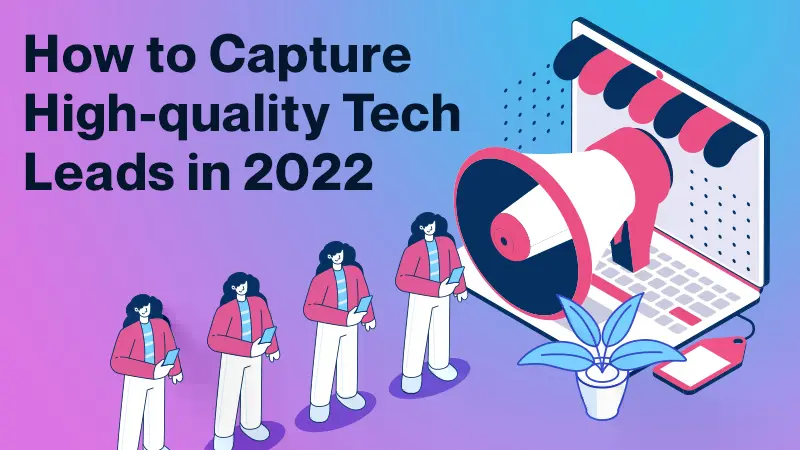Attracting high-quality IT leads isn’t difficult.
The challenge is trying to create content that resonates with them and crafting proper buyer journeys that guide them through your lead nurturing funnels.
In this quick guide, we take a look at what it takes to bring in IT leads in 2022 and how B2B companies can scale their processes moving forward.
Personalized Campaigns and Targeted Personas
There are different types of IT buyers and leads, and the first step to creating campaigns for them is understanding how they function.
You need to be able to segment your target customer personas and segment those lists even further.
This is the only way you can create targeted campaigns that leverage hyper-personalized content that resonates with your potential buyers.
When we say personalized, we don’t just mean switching names and industries on a template email. We’re talking about creating a different series of lead nurturing campaigns that ensure proper resources are being sent out to handle specific pain points within the personas.
Related: How Customer Profiles and Buyer Personas Drive Your Lead Gen Campaign
Consider the Buying Cycle

One of your primary considerations when selling B2B IT products is the buying cycle.
Whenever companies acquire IT solutions, they’re often doing so either at the beginning of their fiscal year or when they have a bottleneck that they want to solve immediately.
B2B IT marketers need to consider the length of time it usually takes for a prospect to come in through lead generation and make a buy decision. It could take months before a deal could push through, this means constant lead nurturing from the marketer’s side.
Once the cycle is considered, it will be easier to plan out the length of the entire lead nurturing process and buyer journey.
Related: The B2B Buying Process Has Changed: Here’s How Not to Get Left Behind
Omnichannel is Key

You can’t always message your IT leads cold, they’re not glued to their inboxes all day nor is it their only means of communication. These days, omnichannel is the only way to go if you want to do proper lead generation.
It could start with a cold email that’s followed up with some work on LinkedIn; or you could start by adding them on Facebook, releasing some brand awareness posts, and then giving them a cold call.
No matter what your sequence is, you need to spread out your lead generation into multiple channels to make sure you have the maximum surface area to reach them.
Also, remember not to constantly bombard them with ads for you to sell to them, your leads want a journey. Sometimes your content should be purely brand awareness, at times corporate social responsibility, or you could take the “proper” high road and post actionable content that they can use in their everyday lives.
Being subtle is key here.
Retarget and Remarket

Always make sure you use a form of retargeting to make the message stick.
Most marketers will use the Facebook Pixel on their site so that they can send out a retargeting ad after the prospect leaves their website. However, don’t just stop there, you can even grab the emails of your leads and throw them into a custom audience.
This way you can market to them before or after your cold email campaign.
SEO Centered on Resources
Every marketing digital campaign needs a little SEO to make sure that leads are coming in through main keywords on the homepage, but it’s time to rethink this.
For IT leads you need to think about the value to bring to the table and there’s no better way of doing this than by having resources on your website that can help give your leads actionable advice on how they can do their jobs better.
This means moving some of your SEO efforts from targeting buyer intent to knowledge intent.
Why should we do this?
Simple, a lot of your IT leads do Google searches every day, and if you’re able to service their knowledge needs, who will they come to when they finally need to buy a solution? You.
Also, pushing traffic to your knowledge pages is a great way of building brand recognition and getting to see what you offer, without having to directly sell to them.
The more value that you bring to the table, the more rapport that you get to build.
Related: How to Use SEO To Influence B2B Buyers On Social Media
It’s Not Just the DMU You’re Targeting
Don’t just target the IT leads that are responsible for making the buy decision, although they’re critical in the conversion, it’s not just them who will be using the solution that you are selling.
Make sure you have a separate brand awareness campaign that targets the people who will be using the products that you have to offer. This helps you internally when the DMU calls for a meeting because they will be familiar with the product and in turn sell it to you.
Targeting IT leads doesn’t just rely on proven B2B marketing strategies. They are a more technical bunch that requires special care and attention, especially when it comes to their lead nurturing.
As long as you can guarantee that you’re getting the resources that they need to function well in their roles, you’re on the right track to scoring that deal!













